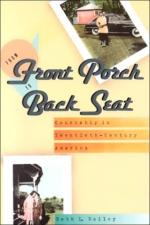
|
| Name: _________________________ | Period: ___________________ |
This test consists of 5 multiple choice questions, 5 short answer questions, and 10 short essay questions.
Multiple Choice Questions
1. What became the symbol of youth culture according to the author in Chapter 4, "Sex Control"?
(a) Reading.
(b) Sex.
(c) Music.
(d) Drugs.
2. What word in the book means a statement or proposition that seems self-contradictory or absurd but in reality expresses a possible truth?
(a) Etiquette.
(b) Feminine.
(c) Masculine.
(d) Paradox.
3. According to the author in Chapter 4, "Sex Control,” many youths defined themselves as youth through what?
(a) Playing sports.
(b) Studying hard.
(c) Breaking the law.
(d) Public sexuality.
4. What book did Ernest Burgess write in 1939?
(a) A Freudian Approach to Psychology.
(b) Introduction to the Science of Sociology.
(c) Predicting Success or Failure in Marriage.
(d) Sociology and the Sexual Being.
5. What word from Chapter 4, "Sex Control” means refraining from sexual intercourse that is regarded as contrary to morality or religion?
(a) Chaste.
(b) Contagious.
(c) Corporate.
(d) Conducive.
Short Answer Questions
1. The sexual revolution lasted into what decade?
2. According to the author in Chapter 4, "Sex Control,” those born between 1900 and when grew up with new understandings of sexuality?
3. According to the author in the Epilogue, sexual intercourse replaced what as the youth convention during the sexual revolution?
4. Premarital sex was not “conventional” until what decade, according to the author?
5. A sociologist argued that the changes in American attitudes towards marriage after World War I were the consequence of what in Chapter 6, "Scientific Truth ... and Love"?
Short Essay Questions
1. According to the author in the Epilogue, the sexual revolution was primarily a revolution in meaning. What does she mean by this?
2. What did the new sexual innovations represent symbolically to American youth in the period between World War I and the sexual revolution?
3. How did the rise of a national youth culture change the power structure in America, according to the author in Chapter 4, "Sex Control"?
4. How does the author describe the sexual behavior of youth in the early twentieth century in Chapter 4, "Sex Control"?
5. How did physical displays of affection evolve in the early part of the twentieth century?
6. How were gender roles defined in the 1950s? How long was this view dominant in American society?
7. What were the strengths and weaknesses of marriage experts in the twentieth century?
8. What societal movement was Ernest Burgess associated with? What were the goals of this movement?
9. Who was blamed for the breakdown in gender identity? Why?
10. How did American youth come to define themselves after World War II? What tensions did this cause?
|
This section contains 769 words (approx. 3 pages at 300 words per page) |

|




